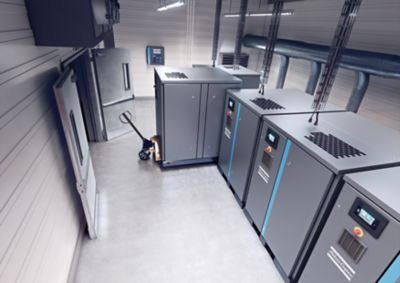Heatless desiccant dryers
Because of their simple design, heatless desiccant dryers are often preferred for extreme environments. This sector includes operations in remote areas, hazardous sites with explosive gases and powders, and applications with a high inlet air temperature. In the drying process, wet compressed air flows upward through the desiccant which adsorbs the moisture, from the bottom to top of the tower. During the regeneration cycle, dry air from the outlet of the drying tower is expanded to atmospheric pressure and passed through the saturated desiccant, forcing the adsorbed moisture out. After desorption, the purge silencer valve is closed, and the vessel is re-pressurised. After regeneration, the functions of both towers are reversed.
Dryers’ relative life cycle cost - heatless v. heated blower
When calculating lifecycle costs, a heatless desiccant dryer may be considered to be more expensive to own because it uses a substantial volume of compressed air for purging during regeneration. Typically, average purge air takes up to 16-20% of the rated flow capacity of a heatless dryer. Despite these losses, the heatless dryer remains a popular choice because of its simplicity and reliability. However, if we compare the total cost of ownership between the two types of dryer over a 10-year lifetime, the heated blower purge type of unit has the advantage over the heatless desiccant method by some 40%. Although power costs for the heating process would amount to 30% as opposed to zero, this difference is considerably outweighed by the compressed air output losses from the purging operation, which equates to 80% of the TCO. In terms of other component costs, there are now newer and more advanced dryer technologies, such as the latest models in Atlas Copco’s BD+ range that will guarantee a dew point down to -40°C and are capable of achieving -70°C. Furthermore, the zero purge losses achieved by the industry-leading BDZP dryers, operating with an inlet flow rate of 300 l/s with a system pressure of 7 Bar G, could see annual savings in the region of £10-14k, based on average kW/hr rates and when running 24/7 all year round.
Need more details? Have a look at our full range of desiccant dryers

